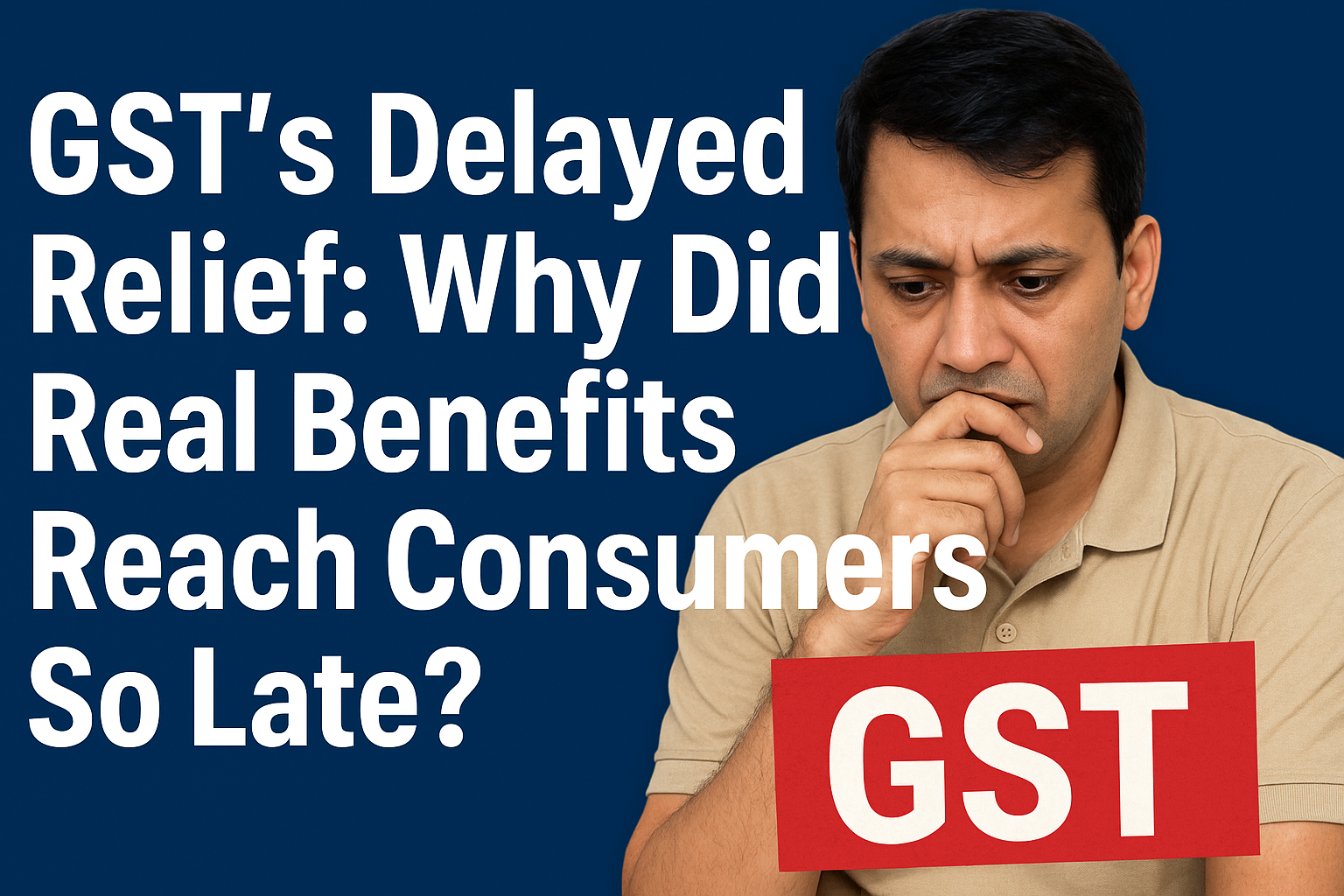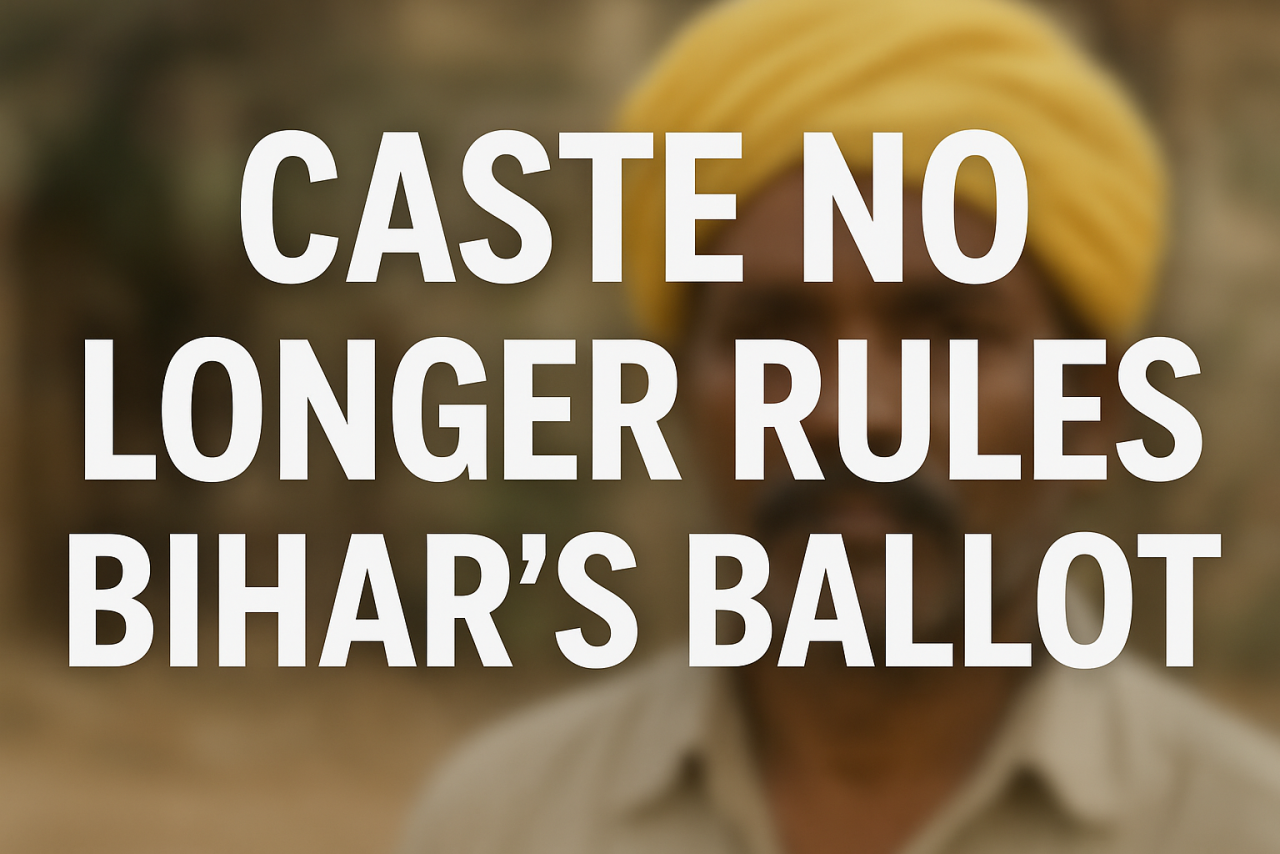
When the Goods and Services Tax (GST) came into effect in July 2017, it was packaged as the most significant tax reform since independence. The slogan “One Nation, One Tax” promised to simplify India’s messy tax system, unify the market, and lower the burden on consumers. The government projected it as a bold leap into a modern, transparent economy, almost a historic moment to rival liberalisation. Yet, as the latest decisions to cut tax slabs and tighten consumer protections show, the real relief for ordinary Indians is only arriving now—eight years after its introduction.
This delayed correction forces us to ask uncomfortable questions. If GST was indeed a reform for the people, why did the government take so long to address basic issues like profiteering, unfair trade practices, and the excessive number of tax slabs? Why was the rhetoric of reform celebrated, while consumers waited years to feel any real benefit?
The Long Wait for Consumer Relief
The government’s latest move is undeniably significant. Goods that earlier attracted 12% or 18% GST are now being brought under lower slabs of 5% or 12%. Some essentials have even been exempted altogether. These changes, to take effect from 22 September, will provide relief to household budgets stretched by inflation and stagnant incomes.
But this raises a critical point: if GST was supposed to rationalise taxes and bring prices down, why were consumers made to wait for nearly a decade? The fact that the consumer affairs ministry is only now setting up systems to track profiteering through social media and helplines exposes the weak enforcement of GST’s earlier promises. Businesses had long found ways to pocket the gains from tax cuts, leaving citizens without the intended benefits.
The government is now warning companies that failing to pass on GST benefits will be treated as “unfair trade practice.” Such language reflects an admission that the system has been abused for years. In effect, the state is acknowledging that consumers were short-changed while GST was still being celebrated as a “glorious reform.”
Reform in Theory, Confusion in Practice
From the beginning, GST was touted as a reform that would eliminate complexity and reduce tax burdens. In practice, however, it created confusion for businesses and frustration for consumers. Instead of a single rate, India ended up with multiple slabs—5%, 12%, 18%, and 28%—plus frequent changes that left traders struggling with compliance and consumers puzzled by inconsistent pricing.
Small businesses in particular bore the brunt of complicated filing requirements, while larger companies often retained higher prices despite rate cuts. Consumers thus found themselves paying as much, if not more, under GST than they had in the earlier regime of excise and VAT.
Calling GST a “glorious reform” under such circumstances seems more like political marketing than economic reality. It was less about consumer benefit and more about creating the appearance of a bold reform milestone.
Economic and Political Timing
The sudden urgency to overhaul GST and ensure businesses pass on benefits to consumers cannot be divorced from economic realities. Household consumption, the backbone of India’s economy, has been weakening. Inflation in food and essential commodities has eroded purchasing power. To stimulate demand, the government needs to ease pressure on ordinary families.
In this sense, the GST overhaul is as much an economic necessity as a consumer protection measure. By lowering effective prices and ensuring compliance, the government hopes to boost spending and revive growth. Politically too, the timing is convenient. By calling the cuts a “gift to the nation,” leaders like Piyush Goyal are reframing a delayed correction as a benevolent gesture, turning what could be seen as an admission of failure into a headline achievement.
What the Delay Reveals
The real problem lies in the gap between the promises of GST and its actual delivery. If the government had been serious about consumer welfare, monitoring mechanisms against profiteering should have been established from day one. Instead, these measures are arriving years later, only after prolonged criticism and mounting public discontent.
The fact that consumers are being asked to lodge complaints through helplines and social media today shows how little institutional accountability was embedded in GST’s original design. For a reform that was sold as revolutionary, its consumer dimension was shockingly underdeveloped.
Final Take
GST is finally being rationalised in ways that can genuinely benefit citizens, but the long delay has damaged public trust. Future reforms must avoid such gaps between promise and practice. Transparency, simplicity, and fairness must be embedded from the outset, not patched in later under political or economic pressure.
If GST is to live up to its intended vision, the government must do more than announce rate cuts. It must ensure strict compliance, prevent profiteering, and continuously place the consumer at the centre of the tax system. Only then can GST evolve from being a political slogan into a reform that actually changes lives.
Until that happens, every belated correction will continue to carry the same uncomfortable shadow: why did genuine relief take so long to arrive?





















